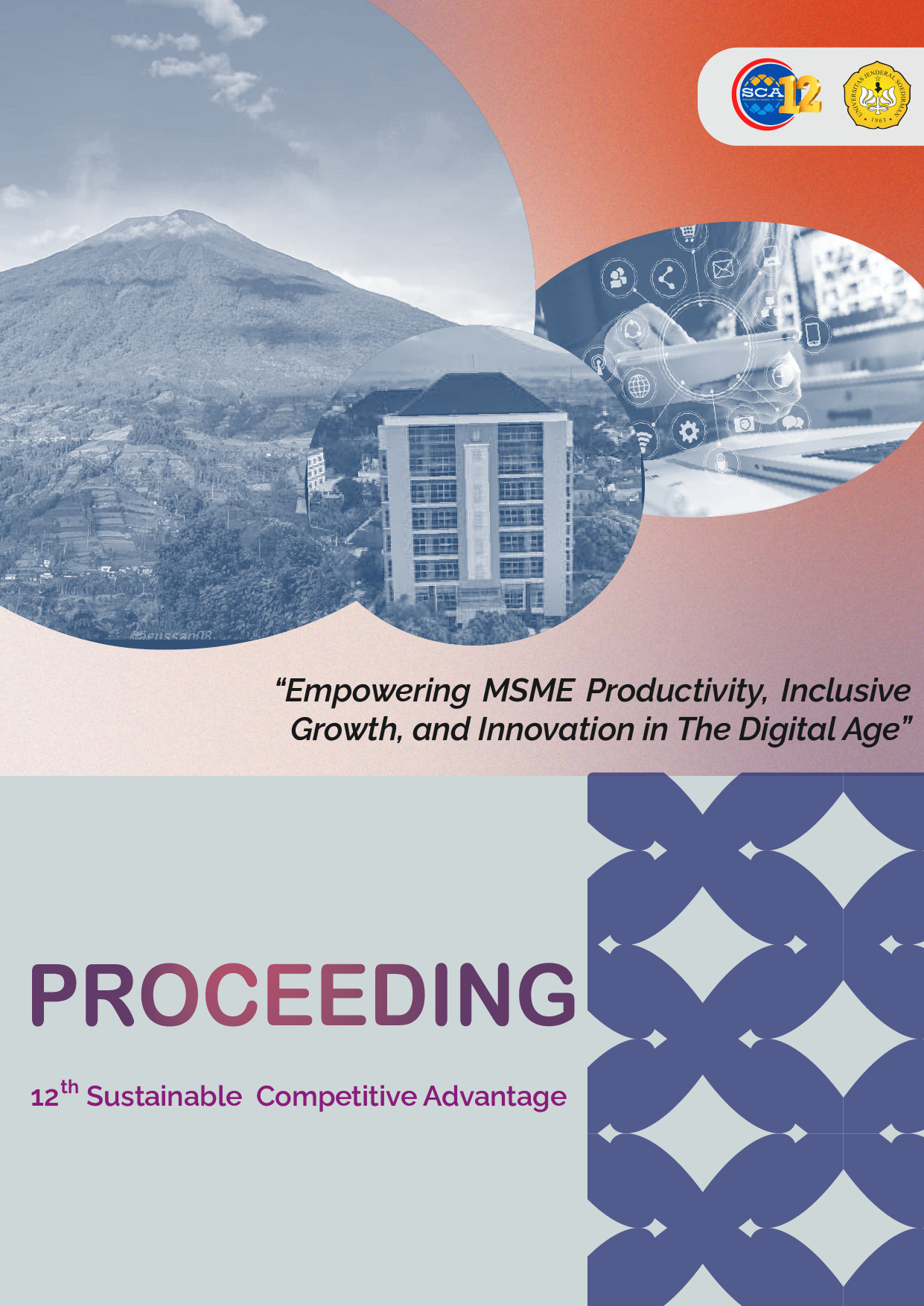How To Be an Excellent Team ? Total Productive Maintenance Case Study In Cemen Manufacturing
Abstract
PT Solusi Bangun Indonesia was assigned a Total Productive Maintenance (TPM) activity by the Indonesia cement holding group (PT Semen Indonesia Group) to support the company's vision to become a leading provider of building materials in the region. With the aim of sharing best practices in factory operations,utilizing sustainable practices, transforming into an integrated performance-driven culture, conducting a wave of improvement in the industrial era 4.0 so as to increase the Overall Equipment Effectiveness of each factory through small group activities in total productive activities. maintenance. This will be achieved if there is an excellent team which is marked by the innovation produced by the team. The research problem is why innovation only appears in certain teams even though the whole team has received the same training and assistance and the same assessment is carried out in each quarterly routine assessment in the TPM award event with the management level being actively involved and supporting and coaching several SGA (smallgroup activity) teams that became task force. The research was conducted using the case study method, where the researcher entered the research object, the researcher focused on observing, describing, interpreting and analyzing. As well as conducting in-depth interviews through semistructured multilevel questions at the Cilacap Plant, conducting focus group discussions, analyzing data from documents and archives. Triangulate data through data archives for assessment of TPM activities and innovation champions to produce pattern recognition formulas that can be replicated in all other teams. Found obstacles that hinder the emergence of innovation and how innovation is raised in a team becomes the object of this research. So that it is found that pattern recognition to become an excellent team requires a combination of a creative process that is supported by a psychologically safe environment and produced by people who have the characteristics of "high need for autonomy, highly motivated integrated regulation, altruism, organizational citizenship behavior, and affectiveness. work commitment. An additional factor that helps make it easier for a team to become an innovation champion is maximizing momentum
Keywords: Total Productive Maintenance, Creative Process,Personal characteristics, Climate Team.
References
Ahuja, I. P. S., & Khamba, J. S. (2008). Total productive maintenance: literature review and directions. International journal of quality & reliability management.
Ahuja, I. S., Khamba, J. S., & Choudhary, R. (2006, January). Improved organizational behavior through strategic total productive maintenance implementation. In ASME International Mechanical Engineering Congress and Exposition (Vol. 47748, pp. 91-98).
Baer, M., & Frese, M. (2003). Innovation is not enough: Climates for initiative and psychological safety, process innovations, and firm performance. Journal of Organizational Behavior: The International Journal of Industrial, Occupational and Organizational Psychology and Behavior, 24(1), 45-68.
Bamber, C. J., Sharp, J. M., & Hides, M. T. (1999). Factors affecting successful implementation of total productive maintenance: a UK manufacturing case study perspective. Journal of Quality in Maintenance engineering.
Brah, S. A., & Chong, W. K. (2004). Relationship between total productive maintenance and performance. International Journal of Production Research, 42(12), 2383-2401.
Burch, G. S. J. (2006). The “creative-schizotype”: Help or hindrance to team-level innovation. University of Auckland Business Review, 8(1), 43-51.
Chan, F. T. S., Lau, H. C. W., Ip, R. W. L., Chan, H. K., & Kong, S. (2005). Implementation of total productive maintenance: A case study. International journal of production economics, 95(1), 71- 94.
Edmondson, A. C., & Mogelof, J. P. (2006). Explaining psychological safety in innovation teams: organizational culture, team dynamics, or personality?. In Creativity and innovation in organizational teams (pp. 129-156). Psychology Press.
Fore, S., & Zuze, L. (2010). Improvement of overall equipment effectiveness through total productive maintenance. World Academy of Science, Engineering and Technology, 61(1), 2010.
Kratzer, J., Leenders, O. T. A., & Engelen, J. M. V. (2004). Stimulating the potential: Creative performance and communication in innovation teams. Creativity and Innovation Management, 13(1), 63-71.
Mansfeld, M. N., Hölzle, K., & Gemünden, H. G. (2010). Personal characteristics of innovators—an empirical study of roles in innovation management. International Journal of Innovation Management, 14(06), 1129-1147.
McKone, K. E., Schroeder, R. G., & Cua, K. O. (2001). The impact of total productive maintenance practices on manufacturing performance. Journal of operations management, 19(1),39-58.
Miron, E., Erez, M., & Naveh, E. (2004). Do personal characteristics and cultural values that promote innovation, quality, and efficiency compete or complement each other?. Journal of organizational behavior, 25(2), 175-199.
Modgil, S., & Sharma, S. (2016). Total productive maintenance, total quality management and operational performance: An empirical study of Indian pharmaceutical industry. Journal of Quality in Maintenance Engineering
Nallusamy, S. (2016). Enhancement of productivity and efficiency of CNC machines in a small scale industry using total productive maintenance. In International Journal of Engineering Research in Africa (Vol. 25, pp. 119-126). Trans Tech Publications Ltd.
Nijstad, B. A., Berger-Selman, F., & De Dreu, C. K. (2014). Innovation in top management teams: Minority dissent, transformational leadership, and radical innovations. European journal of work and organizational psychology, 23(2), 310-322
Paulus, P. B., & Dzindolet, M. (2008). Social influence, creativity and innovation. Social Influence, 3(4), 228-247.
Wang, F. K. (2006). Evaluating the efficiency of implementing total productive maintenance. Total Quality Management & Business Excellence, 17(5), 655-667.

